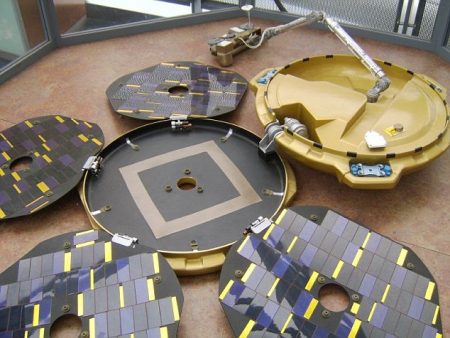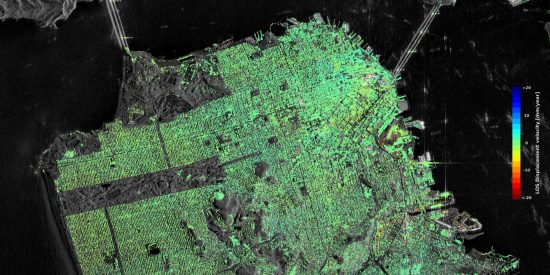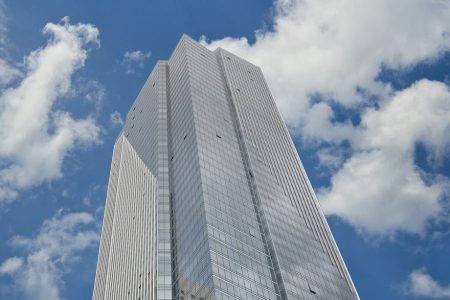November 28, 2016 – Two news items in the past few weeks have prompted me to write this piece about 21st century engineering. The first story concerns the ExoMars mission to place an orbiter around the planet and a lander on its surface. All the science and engineering behind the mission, plus the opportunity to gain insight from NASA’s successes in creating technology to land stationary probes and rovers on the surface of the planet, should have led to success but instead half the mission failed. The second story concerns the building of a 58-storey skyscraper in San Francisco. Building skyscrapers should be, by now, second nature to architects and engineers. But apparently not since the $350 million U.S. Millennium Tower completed in 2008 is starting to become the latest rendition of the Leaning Tower of Pisa.
Both of these stories show that attention to detail in the 21st century requires humans practicing sophisticated science and engineering need to be more vigilant. For more about these 21st century fiascos read on.
Failing to Land a Probe on Mars
For a second time in the 21st century the European Space Agency (ESA) has failed in an attempt to deploy a lander on the surface of Mars. Both times all the efforts of hundreds of engineers and scientists went for naught because of botched engineering design or programming error.
Back in 2003 the ESA sent the Mars Express to the Red Planet with a British-built lander on board, named the Beagle 2. Mars Express entered into orbit around the planet in December 2003. The Beagle 2 separated from the orbiter and began a descent to the surface on Christmas Day. It was never heard from again and its fate was a mystery until its wreckage was spotted by a NASA Mars orbiter in 2015. The evidence shows that Beagle 2 got to the surface okay but that two of its four solar panels failed to deploy blocking its communication antenna from sending and receiving signals.
The design of Beagle 2 presented a recipe for potential failure. Rather than an elevated platform which would have given the solar panels greater flexibility in movement, the Beagle 2 was designed to land flush on the surface with the panels opening up like petals of a flower (see image below showing deployment of a replica of the probe).
But what might happen if the lander was too close to a boulder or on uneven terrain that could impede a panel or two from opening? Nobody in the engineering team that built Beagle 2 had insight into recognizing this as a potential design problem.
With ExoMars, the lander named Schiaparelli, was not designed the same way as Beagle 2. The landing technology was different from that used by successful NASA Mars missions that placed Spirit, Opportunity, Phoenix and Curiosity on the surface of the planet. When Schiaparelli began its descent to Mars it used aerobraking and heat shield technology (see illustration below) combined with a parachute to help it make it to the surface. The decision-making software on board could assess the doppler radar and altimeter readings during descent and make corrections to the control thrusters and determine when to release the parachute for final landing sequence.
Preliminary analysis of what happened indicates that the navigation software erred in its reading of the data being fed to it by the altimeter and radar resulting in a preliminary release of the parachute. The landing thrusters fired thinking the probe was just within a few meters of the Martian surface when in reality it was descending at an altitude of 3.7 kilometers. The end result a crash landing on the surface that destroyed Schiaparelli.
Engineers at ESA were successfully able to produce the same error reading in computer simulations after the fact. Too bad they didn’t fully anticipate such an event by providing on board system error correction and validation routines to save the probe. Fortunately the ExoMars was successfully inserted into orbit just like its predecessor Mars Express.

The Symbol of New San Francisco is a Tower of Glass That’s Sinking
Completed in 2008, San Francisco’s Millennium Tower was supposed to be the place for the rich and famous to live. When first completed, the 58-storey building seemed to be designed to meet the standards of the civil engineering codes developed in earthquake prone California. But the architects and engineers didn’t consider the underlying geology upon which the building’s foundation would rest. Turns out Millennium Tower is built on mud-filled unstable ground near San Francisco Bay’s original shoreline. This is reclaimed land.
Usually when designing a skyscraper the engineers anchor the foundation in underlying bedrock. Not Millennium Tower’s design team. Instead they anchored their glass tower driving piles into approximately 25 meters (80 feet) of dense sand and then laid a concrete slab on top. This was a cost-shaving measure since the bedrock depth was 60 meters (200 feet).
Skyscrapers do settle after construction but Millennium Tower is settling and tilting at a rate that equals what was anticipated in its expected lifetime within the last seven years. When design certified the building was expected to subside by no more than 10 to 15 centimeters (4 to 6 inches). Instead it has sunk ovwer 40 centimeters (16 inches) and is still going down. To compound the sinking the building is leaning over 5 centimeters (2 inches) and no one knows where it will stop. If you want to witness just how much of a tilt watch one building unit owner’s video of a rolling marble.
Compounding the engineering mistake made in the design and construction of the foundation is the fact that the building is made of reinforced concrete, described by some as “uniquely heavy for such a tall structure built on landfill and not anchored to bedrock.” Supposedly the choice of material was to compensate for not reinforcing the foundation base by drilling to the bedrock. Now it appears that the material choice may be further contributing to the building’s declining elevation.
In the latest twist, an observation satellite, Sentinel-1, in scanning the city surface from space using its on board sophisticated radar designed to detect subsidence hotspots in earthquake prone regions, has detected the rate of downward displacement and tilt which is ongoing.
In the satellite image below Sentinel-1 data displays areas with no detected ground subsidence in the colour green. Areas appearing from yellow to orange to red shows the rate of sinking. The tower location can be seen just to the west of the San Francisco-Oakland Bay Bridge near the top right of the image.
What makes this engineering fiasco even more of a total screw up is the fact that building inspectors from the city apparently knew about the problem and yet didn’t inform the public or those purchasing condominium units in the building. And then to top it off the city decided to build a new transportation hub right next to the Millennium Tower further contributing to the building foundation’s instability. And there appears to be no easy fix.
Will Millennium Tower become a tourist attraction like the Leaning Tower in Pisa? Only time will tell. Of bigger concern is earthquakes and their potential impact on the stability of the structure.
Sentinel-1 has observed many other human-engineered projects that are potential nasty surprises for those who rely on them as places to live or work. For example the Oslo train station appears to be another building experiencing severe subsidence. Between it and Millennium Tower we are creating an entirely new science – deformation studies.











